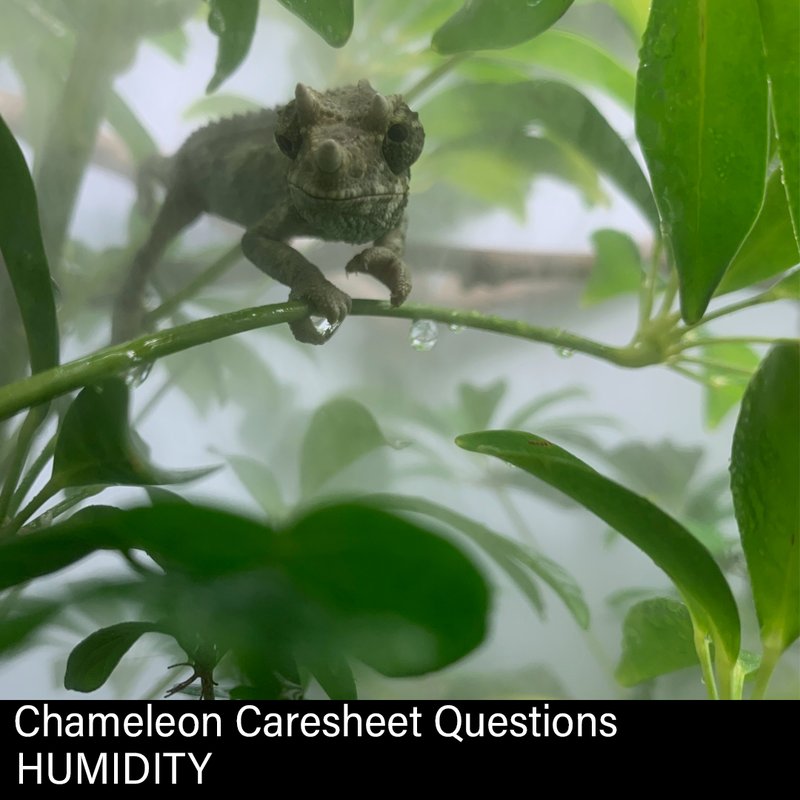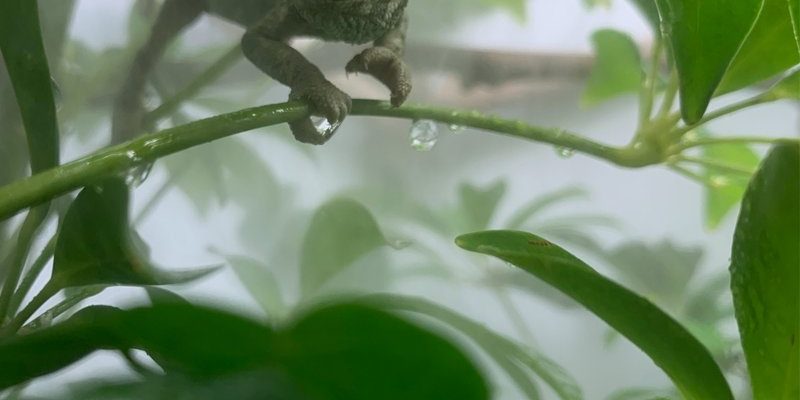
Imagine stepping into a warm, humid rainforest—that’s the kind of place your veiled chameleon naturally thrives in. So, replicating that environment in your home is super important. They specifically come from Yemen and Saudi Arabia, where the climate is both warm and humid. In this guide, we’ll dig into everything you need to know about temperature and humidity needs for the veiled chameleon, from setting up their habitat to troubleshooting common issues.
Understanding the Ideal Temperature Range
Let’s start with temperature. Veiled chameleons need a temperature gradient in their enclosure, which means you’ll want a warm side and a cooler side. The basking spot should be around 95 to 100 degrees Fahrenheit. This is where your chameleon can soak up some heat, just like a sunbather lounging on the beach.
On the cooler side, you should aim for about 75 to 85 degrees Fahrenheit. This gives your chameleon the option to cool down when it gets too hot. Having these two zones helps regulate its body temperature, similar to how you might adjust the thermostat at home depending on how warm you feel.
To monitor these temperatures, a reliable thermometer is essential. You can easily find digital thermometers that display the temperature both inside and outside the enclosure. This way, you can make adjustments as needed and ensure your chameleon is comfortable.
The Importance of Basking Lights
One of the best ways to achieve that warm basking spot is by using a basking light. These lights not only heat the enclosure but also provide the UVB rays your chameleon needs to synthesize vitamin D3. Without adequate UVB exposure, a chameleon’s health can suffer, leading to metabolic bone disease—a serious condition that can be avoided with proper lighting.
You might be wondering about the placement of these lights. Ideally, position the basking light about 12 inches above the basking rock or branch. This allows the heat to concentrate in that area while still giving your chameleon plenty of space to escape to a cooler spot.
Don’t forget to turn the basking light off at night. Chameleons thrive on a day-and-night cycle, and they need darkness to rest. A simple timer can help automate this process, ensuring your pet gets the best care.
Humidity Levels: Why They Matter
Now, let’s chat about humidity. Veiled chameleons thrive in environments with humidity levels between 40% and 70%. This might sound tricky, but it’s crucial for their overall health. Humidity helps with hydration and also plays a role in shedding their skin, which is super important for a growing chameleon.
To maintain proper humidity levels, consider using a misting system or a spray bottle. Misting your chameleon’s habitat a couple of times a day will keep the air moist. You’ll want to spray in the early morning and late afternoon, mimicking natural rain patterns.
If you’re using a misting system, be sure to select one that can evenly distribute water across the enclosure. Not only will this help maintain humidity, but it also encourages your chameleon to drink, as they often get hydration from droplets on leaves.
Monitoring Humidity with Hygrometers
To keep track of humidity levels, a hygrometer is your best friend. These handy devices will help you know if your enclosure is too dry or too humid. You can find digital hygrometers that are accurate and easy to read.
Ideally, the humidity should fluctuate throughout the day. For example, you might notice it’s lower during the day when the basking light is on and higher after you mist in the morning or evening. This fluctuation mimics natural conditions and keeps your chameleon’s environment dynamic and engaging.
If you’re struggling to maintain the right humidity, you can also introduce live plants into the enclosure. They help increase humidity levels while also providing your chameleon with places to hide and explore. Just make sure the plants are safe for reptiles!
Signs of Temperature and Humidity Issues
It’s important to keep an eye on your chameleon for signs that temperature or humidity is off. If your chameleon is lethargic or refuses to eat, that’s a red flag. Similarly, if you notice it spending too much time in the basking area, it might be trying to escape from cold temperatures on the cooler side.
Another indicator is shedding problems. If your chameleon is having difficulty shedding its skin, this could be a sign of inadequate humidity. You might find patches of old skin clinging to it, which can be uncomfortable and unhealthy.
If you notice any of these signs, it’s time to reassess your setup. Adjust the lights, mist more frequently, or even add a humidifier if necessary. The goal is to create a thriving environment that mimics the veiled chameleon’s natural habitat as closely as possible.
In the end, getting the temperature and humidity needs for the veiled chameleon just right is all about balance and attention to detail. Remember, your chameleon is relying on you to create a habitat that feels like home, just like a comfy blanket on a chilly night.
By understanding that temperature gradient, providing a basking light, maintaining proper humidity levels, and keeping an eye on your chameleon’s behavior, you’ll be well on your way to ensuring that your colorful friend thrives.
So, get ready to enjoy the colorful antics of your veiled chameleon, knowing you’re giving it the best care possible. After all, a happy chameleon is a well-cared-for chameleon!

